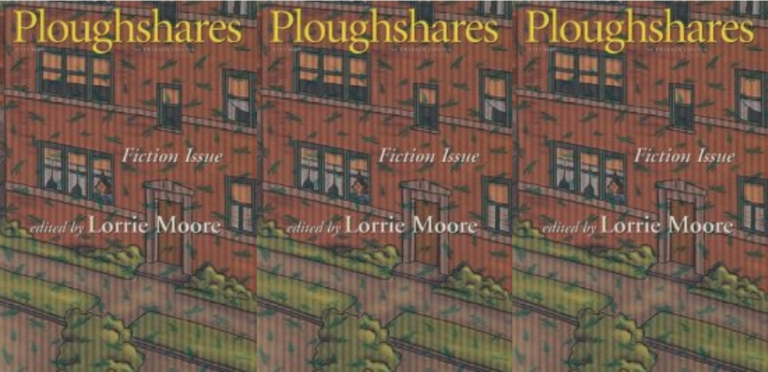Radio Drama and the Written Word

I once spent a year working as literary editor for a group that produced radio plays—dramatic adaptations of American short stories, which were then broadcast on NPR and BBC. Though I was never more than a novice in the radio world, I loved it—the collaboration, the energy of the actors, the process of helping turn prose into a script and then into a dramatic broadcast…but most of all the chance to wander around, ears open, in the world of sound. The things I learned during that time challenged me as a writer, made me look hard at the strengths and possible limitations of prose, and gave me a new set of ideals to aim for on the page.
The sort of radio drama we produced had no narration. Without recourse to a voice-over telling the listener “three men walked into the church,” or “it was a frigid winter day,” or “a week passed,” the challenge was to signal certain information subtly to a listener who might be tuning in from a car or kitchen or treadmill. Efficiency, too, was key; the finished recordings had to be compressed to 28 minutes and 30 seconds, leaving 90 seconds for intro lines and credits.
The tricks I learned during those days in the recording studio are surely child’s play to radio professionals, but to me they were eye-opening. SFX of rainfall to signal the passage of time (the ear says: different weather, the brain concludes: different day). SFX of a ringing phone or car horn or camera flash to evoke an era (the variations in these sounds being aural markers of time). Even if you’ve never considered the difference between the sound of a pencil on paper, the sound of a pen on paper, and the sound made by a feather quill, your ear registers it, and your brain re-paints the imagined world of the story accordingly.
We sense things without consciously noticing: this was one of the primary lessons brought home in the recording studio. When people speak indoors, our voices bounce off the surrounding walls. Even with eyes closed, we can intuit from the ways those echoes come back to us whether the conversation is happening in a furnished room or an empty room, in a stone cathedral or a tin can. As mammals go, humans may use echolocation clumsily—still, our ears are smarter than we realize. When a scene of a radio play we were recording took place outdoors, the sound engineer had the actors record it in a tiny booth called the ‘dead room’—a cubicle the size of a phone booth, heavily padded with foam to absorb all reverberations. The flattened sound of the actors’ voices in the dead room says to the listener’s subconscious mind: outdoors. Add SFX of wind or chirping birds, and you’re there.
The BBC sells CDs of sound effects, and they’re fascinating. A dozen varieties of rainstorm, with and without thunder. Multiple renditions of car-crashes. Cocker spaniel puppies barking, German shepherds barking, seven different kinds of doorbell rings, the sound of a crowbar hitting a tree, the sound of a baseball bat hitting a tree, six different types of ambient noise from the Alps—with and without cowbells, crickets, babbling brook. The list of props with which to furnish a sonic world is endless.
Upon learning that I worked on radio drama, strangers would sometimes offer fierce avowals of love for old, now-extinct radio shows. They reminisced about planning evenings around favorite programs, hushing the household so as not to miss a word. Though I didn’t grow up in the golden age of American radio drama, the depth of their involvement with these shows made sense to me. A few voices coming out of the void, a few well-chosen sonic gestures…and the listener re-creates a whole and intact world out of the raw material of sound. Interruption is unacceptable. Every second matters. This is the pin-drop intensity of radio.
Print and radio journalist Ken Shulman says this about the power of sound to involve the listener: “If Jane Austen is writing about a dance, and they’re playing a quadrille…well, maybe you happen to know what a quadrille sounds like. But if you hear the music or the dance steps, then you’ll really know what it’s like to be there. That’s what radio does well. When I first went into radio, I went around recording people saying interesting things. That works when you’re reading the material—but it doesn’t when you’re listening. Words, as I learned, evoke ideas, and sounds evoke emotion.”
A recent conversation with a friend brought home to me the sheer emotional muscle power of sound. Last year, my friend attended one of the final launches of the space shuttle. Observing from the Kennedy Space Center press site, he described sound of apocalyptic power. The sound of a launch, in fact, is so powerful that protective measures are necessary. Hundreds of thousands of gallons of water are used to suppress the sound waves, which would otherwise damage the launch pad and the departing shuttle itself (that huge white cloud wreathing the pad as the shuttle goes up is mainly steam: hot rocket exhaust hitting water). The sound waves from the rising shuttle are so powerful they’d cause internal injury to anyone too near the launch. Even at a greater distance, fish jump out of the water at the vibrations. My friend, standing over three miles from the launch pad, described such overwhelming sound that he experienced “the entire world flapping in and out of audibility”.
My friend had watched shuttle launches on television. He knew the technical aspects of the launch, knew what to expect. It didn’t matter. He said to me later that the sound was what got him. And when he realized he was weeping, he turned to the crowd of journalists and other observers around him. Every single one was weeping.
Down at the other end of the volume-scale, composer and artist Jeff Talman works with the sort of sound people aren’t consciously aware of. He records the silence in rooms—because, of course, a room is never fully silent. Air moves, rebounds off walls; nearly-inaudible reverberations map the inner dimensions of any interior space. Each building has its own sonic thumbprint. Some of Talman’s compositions feature the ambient sounds of a cathedral, amplified and looped back over themselves, and then shaped into an otherworldly-sounding music. Those gathered sounds, too—a chorus of hints and whispers, sounds at once foreign and familiar–are strangely moving.
All of this, I’m convinced, is relevant to a prose writer. All of it—the roar and the whispering silence–has an equivalent on the page.
And that’s the challenge, the glove thrown down in front of me every time I walked out of the recording studio: how does the writer get words to do what sound can? How to viscerally convey to the reader the roar of the shuttle fighting gravity, or the specific silence of a specific cathedral? The unique sound of high heels striking a stone floor…of boots on a stone floor…of boots on a barn floor, with or without babbling brook? How to convey that barest hint of is-that-thunder that hollows out the atmosphere and says a storm is coming…or summon the echo-less sound of the outdoors in a phrase that will be registered less by the conscious mind and more by the mind’s inner ear?
As fascinated as I am by radio, as inspiring and humbling as I find the world of sound, I’m still most powerfully drawn to the page. The layered depths of human experience put into words by Tolstoy or by Meville seem impossible to convey in any other medium. But my exposure to radio reminds me to pay enormous attention to the impact of tiny gestures, sonic or otherwise. For me, prose’s equivalent to the power of a single sound is summed up in a favorite phrase by Polish writer Ryszard Kapuscinski: “the universe in the raindrop”. The biggest questions of craft come down, always, to the well chosen detail—the kind that illuminates a landscape with the abrupt clarity of lightning. The drink trembling atop the piano in Baldwin’s “Sonny’s Blues,” the midges darning the air in Nabokov’s Laughter in the Dark, the broken corn stalks and loose silk in Morrison’s Beloved; these are the flashes that reveal all. Writers might not have recourse to the riveting and transient medium of sound. But what we do have–the private, enduring, equally riveting medium of written language—is as capable of evoking worlds.
We understand our lives most viscerally through details we rarely name. Answering a ringing phone, we hear the indrawn breath on the other end of the line…and unconsciously identify a loved one before a word is uttered. Our ears recognize the resonance of that breath—a sound shaped by the inner architecture of those we know best.
It’s what I try for on the page: that barely-noticed detail that orients us and constitutes our intimacy with the world. With it in hand, a writer can map in words the intricate architecture of a person, a cathedral, a life.
Photo by Shizhao


